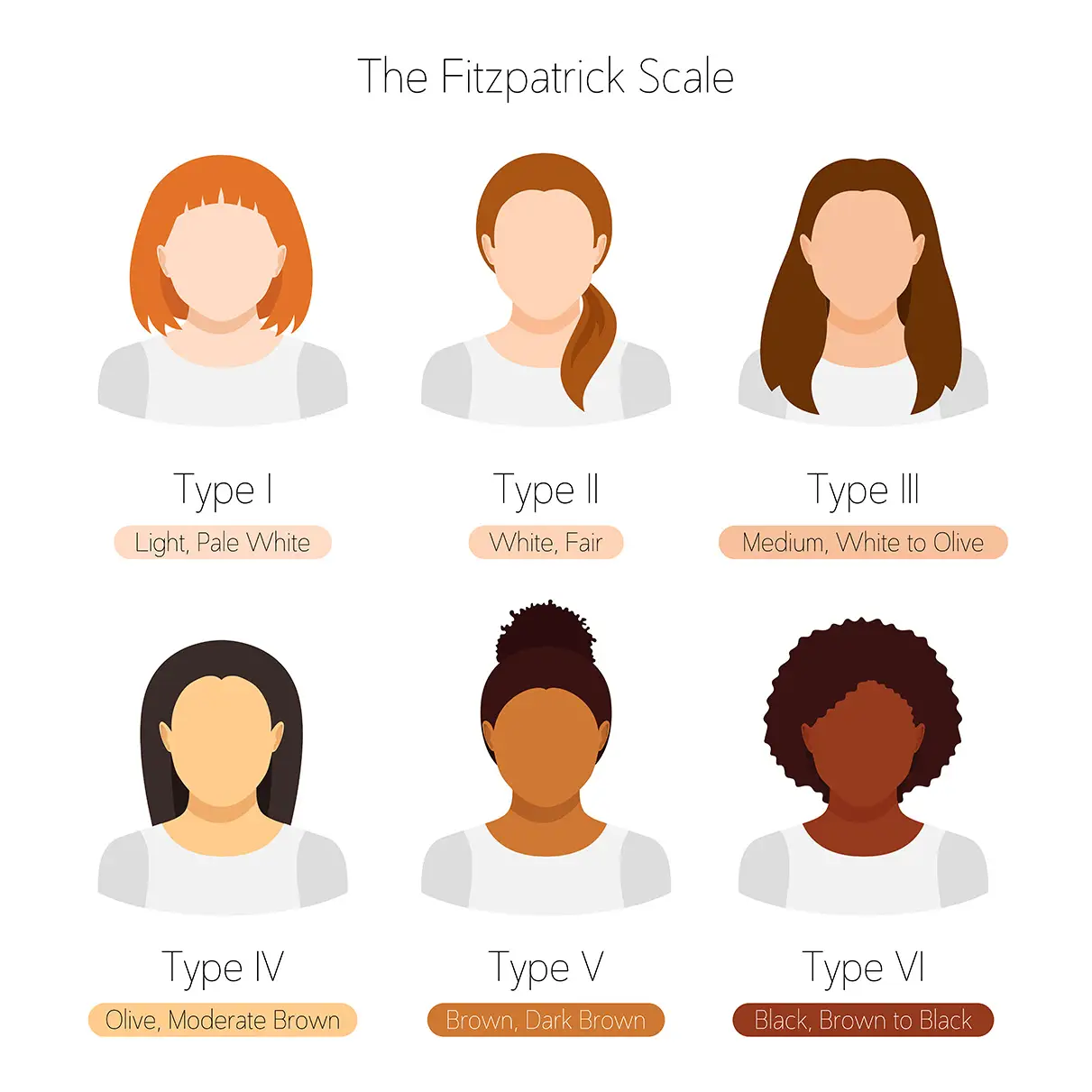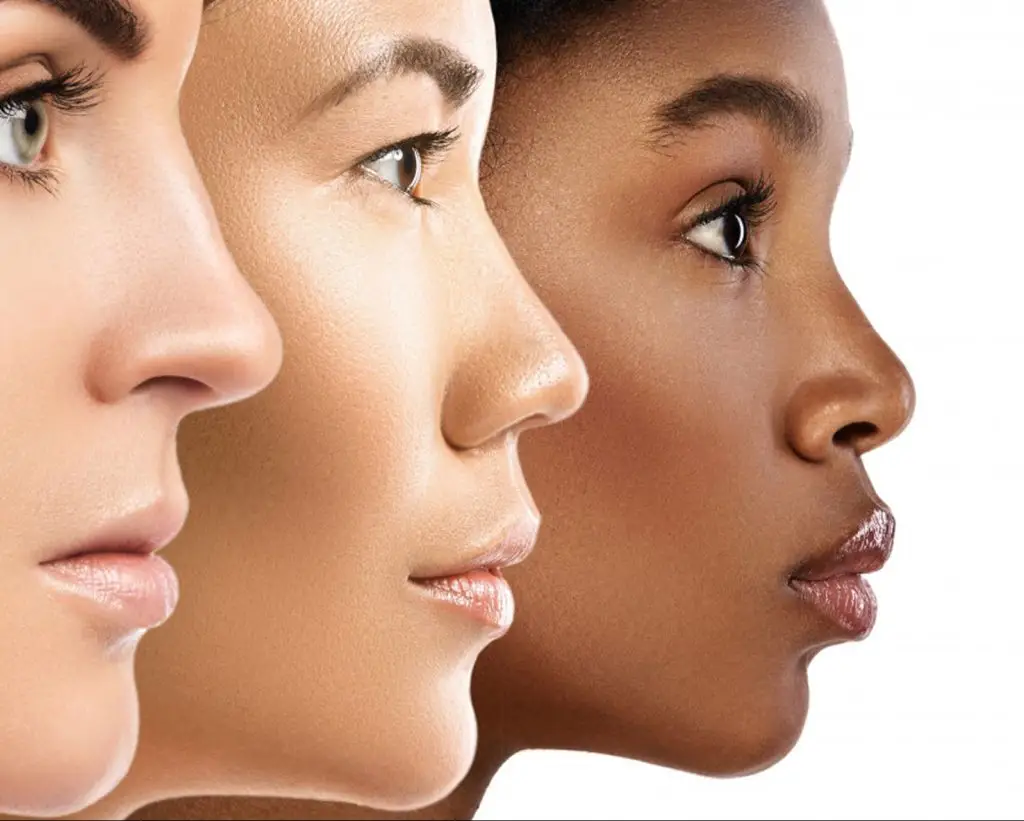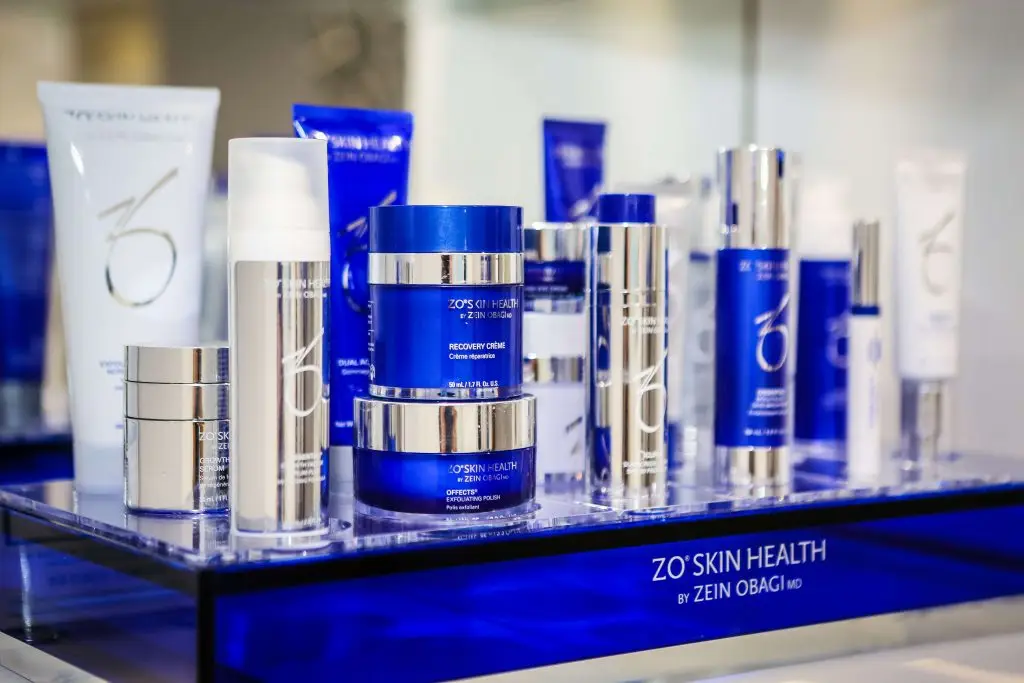The Fitzpatrick scale, (also Fitzpatrick skin typing test; or Fitzpatrick phototyping scale) is a classification system used to categorize human skin tones based on their response to sun exposure and their likelihood of developing sunburn or tanning.
It is commonly used in dermatology and cosmetic procedures to assess the risk of certain treatments and determine appropriate interventions. The scale was developed by Thomas B. Fitzpatrick in 1975 and has since become widely accepted.
The Fitzpatrick scale divides individuals into six different skin types, ranging from Type I to Type VI, based on several factors, including skin color, genetic background, and the presence of freckles or moles. Here’s a brief overview of each skin type:

- Type I: Very fair skin that always burns and never tans. Individuals with Type I skin usually have light-colored or red hair, light-colored eyes, and many freckles. They are highly susceptible to sunburn and have a high risk of skin damage from sun exposure.
- Type II: Fair skin that burns easily but may develop a light tan. People with Type II skin typically have fair hair and light eyes. They are also at a high risk of sunburn and need to take precautions to protect their skin from the sun.
- Type III: Light to moderately fair skin that sometimes burns and gradually tans. Individuals with Type III skin usually have a combination of fair to medium-toned skin, brown hair, and brown eyes. While they can develop a tan, they still need to exercise caution to prevent excessive sun damage.
- Type IV: Olive or moderate brown skin that rarely burns and tans easily. People with Type IV skin have a moderate risk of sunburn and can develop a relatively deep tan. They often have dark hair and brown eyes.
- Type V: Dark brown skin that rarely burns and tans easily. Individuals with Type V skin have a low risk of sunburn and can achieve a significant tan. They have dark hair and dark eyes.
- Type VI: Deeply pigmented dark brown to black skin that never burns and tans easily. People with Type VI skin rarely experience sunburn and can develop a deep tan. They typically have black hair and dark eyes.
It’s important to note that the Fitzpatrick scale is a general guideline and individuals may fall in between two skin types or have unique characteristics that should be considered when assessing their skin’s response to sunlight or recommending treatments.
Download this.
Read more on Laser Hair Removal and Chemical Peels.


